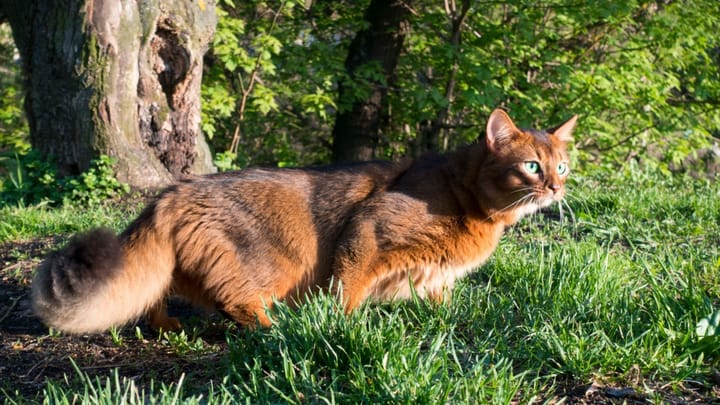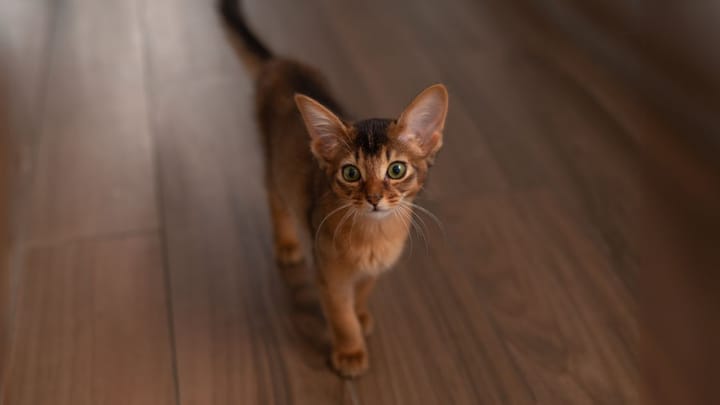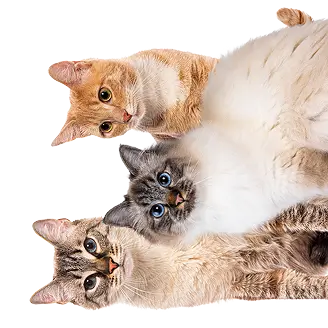Somali


A Somali is essentially a long-haired Abyssinian. Both breeds share the same characteristics, except for hair length. Half-fawn, half-fox, these felines are distinguished by the wild colour of their coats and the vaporous appearance of their fur, but also by their rather effervescent personality!
|
Life expectancy |
The Somali has a life expectancy of between 13 and 15 years |
|
Temperament |
|
|
Adult size |
Female
Between 12 and 14 in
Male
Between 12 and 14 in
|
|
Adult weight |
Female
Between 7 and 9 lb
Male
Between 9 and 11 lb
|
|
Coat colour
Ruddy, cinnamon (red), blue, fawn |
Red Blue |
|
Type of coat
Mid-length |
Long |
|
Eye colour
Gold / yellow, hazel, coppery, green. |
Green
Yellow
Brown
|
|
Purchase price |
The Somali costs approximately 400£ |
The variety of pigmentation of the fur gives each colour of coat an equally variable degree of softness.
More details about the Somali
Somali: Origins and history
Two theories are possible as to the origin of this breed. It could be a genetic mutation, where long-haired kittens were born spontaneously in standard Abyssinian litters. The other theory is that after the Second World War, when there were only a dozen Abyssinians left in England, breeders allowed illegal cross-breedings. A long-haired breed, such as the Persian (which did not have a flat nose at this time), could be responsible for the appearance of the longhair gene in long-haired Abyssinians. The long-haired offspring were initially removed from the farms, but since the gene is recessive, it could have resurfaced only several years later. Still, in the 1950s, in the United States, breeders paid attention to these little "erroneous Abyssinians", valued them and created a new breed. They were called the Somalis in honour of the country of the same name, which neighbours Ethiopia, formerly known as Abyssinia. They are now a very popular breed around the globe.
Physical characteristics of the Somali
Of regal appearance, this feline’s head is a well proportioned, rounded triangle, trimmed with a delicate collar. Their large rounded almond eyes shine with intelligence. The ears, two large flared domes low on the skull, always seem to be listening. Average in size, the body is muscular but slender. They’re thought to be heavier than they really are, because of the longer hair on their flanks and rump. Very feline in their posture, a Somali always seems to tiptoe as if ready to pounce. Finally, a graceful tail completes the portrait of this elegant and refined cat.
Somali: Characteristics
Somali: Behaviour
Breed compatibility Somali
Somali: Purchase price
On average, the price of a Somali is approximately £400, depending on lineage, age, provenance, gender, etc. It will cost £30/month on average to provide for their needs, to offer a quality diet and ensure good health.
Somali: Shedding
Light
This cat does not lose hair in very large quantities, especially if their diet is of good quality.
Somali: Grooming
The Somali requires brushing almost daily, especially on the tail and collar, but their non-woolly fur and is quite easy to maintain.
Somali: Health
On average they live 13 to 15 years.
These cats are typically quite robust.
You’ll need to make sure this cat stays active to avoid him becoming overweight.
Generally healthy, Somalis can still succumb to the same illnesses as all other cats. They are susceptible to periodontal disease (gingivitis and tartar build-up). Prevention and dental care are recommended. They can equally suffer from the same genetic diseases as their Abyssinian counterparts:
- Pyruvate Kinase Deficiency, which causes anemia (genetic testing is available)
- Progressive Atrophy of Retina, which causes blindness (genetic testing is available)
- Amyloidosis, which leads to irreversible renal failure following the deposition of amyloid in the body. (No genetic test for the moment, but the cautiousness and vigilance of breeders has nevertheless slowed down the disease).
A Somali can be mated with an Abyssinian, since they are essentially a descendant of the latter. Kittens from this cross may be long-haired, in which case they will be recognized as Somalis. They may also be born with short hair and in this case, recognized as Abyssinian carriers of the “long hair” gene.






